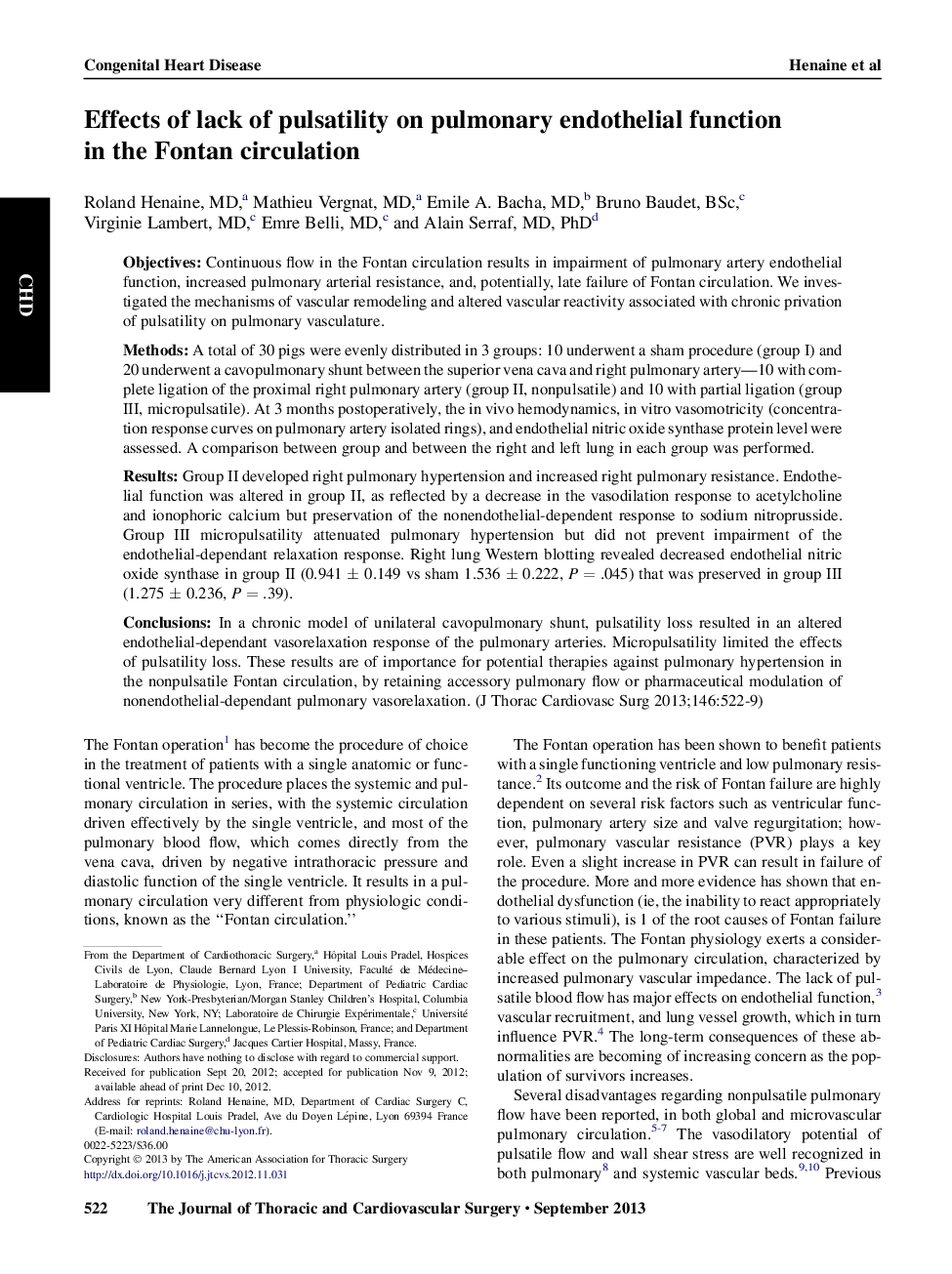| Article ID | Journal | Published Year | Pages | File Type |
|---|---|---|---|---|
| 5990111 | The Journal of Thoracic and Cardiovascular Surgery | 2013 | 8 Pages |
ObjectivesContinuous flow in the Fontan circulation results in impairment of pulmonary artery endothelial function, increased pulmonary arterial resistance, and, potentially, late failure of Fontan circulation. We investigated the mechanisms of vascular remodeling and altered vascular reactivity associated with chronic privation of pulsatility on pulmonary vasculature.MethodsA total of 30 pigs were evenly distributed in 3 groups: 10 underwent a sham procedure (group I) and 20 underwent a cavopulmonary shunt between the superior vena cava and right pulmonary artery-10 with complete ligation of the proximal right pulmonary artery (group II, nonpulsatile) and 10 with partial ligation (group III, micropulsatile). At 3 months postoperatively, the in vivo hemodynamics, in vitro vasomotricity (concentration response curves on pulmonary artery isolated rings), and endothelial nitric oxide synthase protein level were assessed. A comparison between group and between the right and left lung in each group was performed.ResultsGroup II developed right pulmonary hypertension and increased right pulmonary resistance. Endothelial function was altered in group II, as reflected by a decrease in the vasodilation response to acetylcholine and ionophoric calcium but preservation of the nonendothelial-dependent response to sodium nitroprusside. Group III micropulsatility attenuated pulmonary hypertension but did not prevent impairment of the endothelial-dependant relaxation response. Right lung Western blotting revealed decreased endothelial nitric oxide synthase in group II (0.941 ± 0.149 vs sham 1.536 ± 0.222, P = .045) that was preserved in group III (1.275 ± 0.236, P = .39).ConclusionsIn a chronic model of unilateral cavopulmonary shunt, pulsatility loss resulted in an altered endothelial-dependant vasorelaxation response of the pulmonary arteries. Micropulsatility limited the effects of pulsatility loss. These results are of importance for potential therapies against pulmonary hypertension in the nonpulsatile Fontan circulation, by retaining accessory pulmonary flow or pharmaceutical modulation of nonendothelial-dependant pulmonary vasorelaxation.
